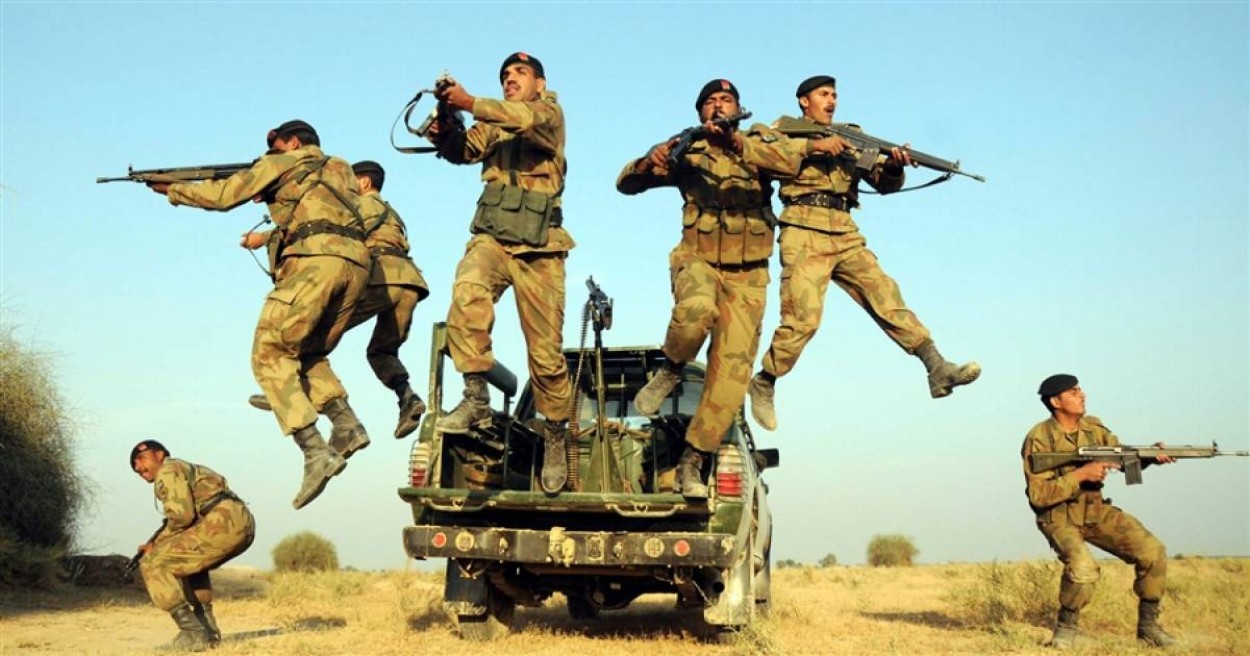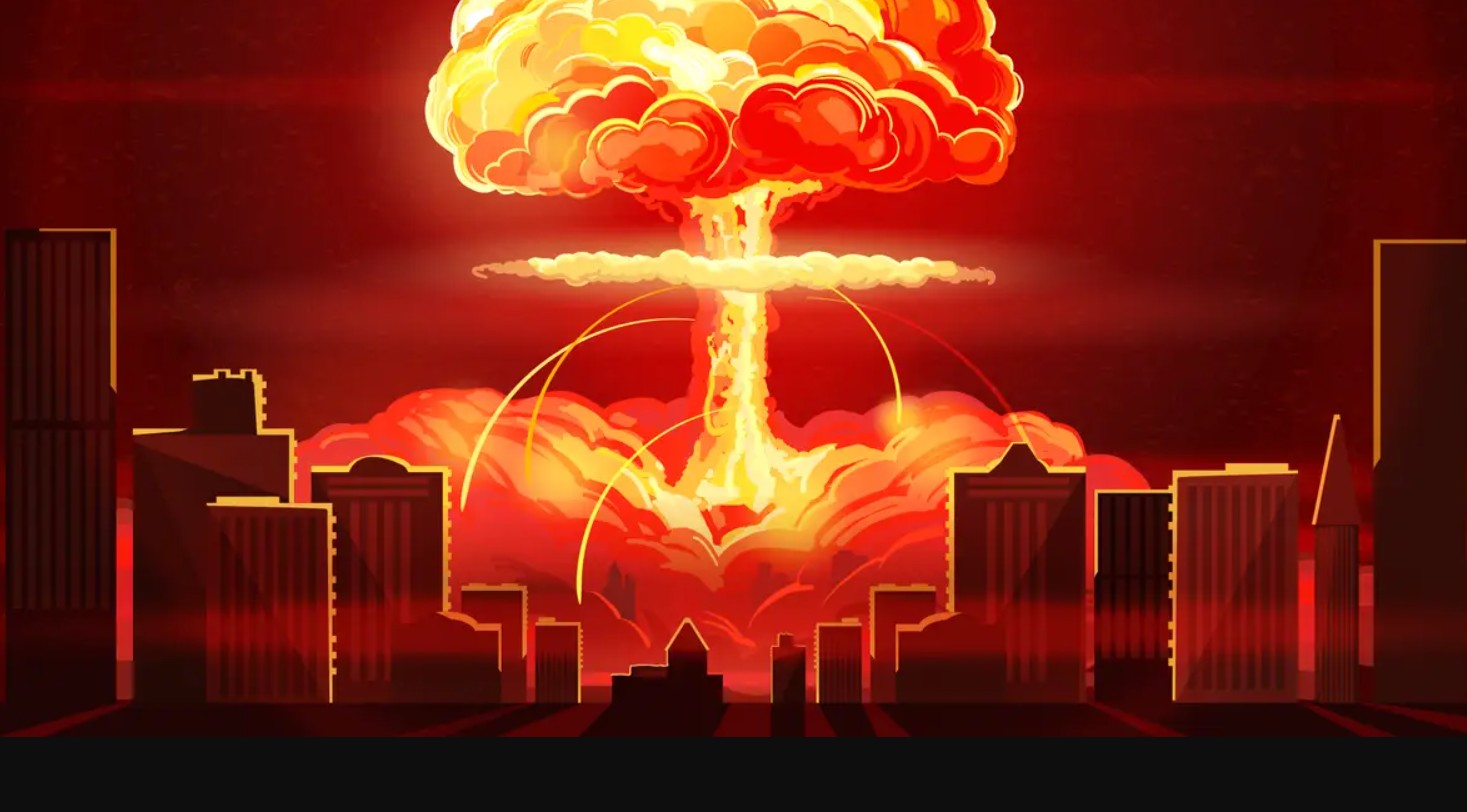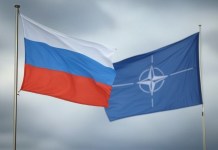OPED By Col Deepak Kumar
India has, as its immediate neighbor, one of the most dangerous nations in the world. The vandalism and arson in the Lahore Corps Commanders’ residence and the GHQ in Rawalpindi were enduring images of the anarchy that overwhelmed the already nebulous law and order situation in Pakistan post the arrest of former Prime Minister Imran Khan.
While most in India would have watched these images with glee, these would have certainly given stress to the military planners at Raisina Hill, New Delhi.
If the protestors could reach and enter the heavily guarded and fortified GHQ, there would be nothing stopping the ideologically motivated and better-trained Islamist terrorists of various hues from laying control over the numerous nuclear sites of Pakistan.
Was it a probable precursor to a frightening spectacle – the Armageddon moment for the world? Are Pakistan’s nuclear weapons and associated systems as safe as Pakistan has been claiming for decades?
The Loose Nuke Scenario
Pakistan is an unstable country and the epicenter of global Jihad. It has an abysmal record of nuclear proliferation to other rogue nations. The protests by Imran Khan’s party Pakistan Tahrik e Insaf (PTI), have thrown the country into chaos and anarchy.
With the Tahrik e Taliban Pakistan (TTP) gaining the upper hand, especially in the restive Khyber Pakhtunkhwa province in recent months, there are legitimate worries of anyone concerned with the safety of Pakistan’s nuclear weapons.
Almost the entire world is concerned, or at least should be given the state of affairs in Pakistan, but the immediate concern is to India and US, whom the various Islamist groups operating in the region consider their enemy.
The Annual Threat Assessment of the US Intelligence Community has also identified the expansion of nuclear weapons stockpiles and their delivery systems, coupled with increasing regional conflict involving nuclear weapons states such as Pakistan, posing a significant challenge to global efforts to prevent the spread and use of nuclear weapons.
Therefore, India and the US need to continuously evaluate the situation and update the contingency plans to address this critical security problem affecting the region and the world.
Last year US President Joe Biden slammed Pakistan, calling it “one of the most dangerous nations in the world” as it has “nuclear weapons without any cohesion.” However, concerns about Pakistan’s nukes have dated back to post-9/11.
President Obama had said that the greatest threat to US security in the short, medium, and long term remained from terrorists armed with nuclear weapons.
In December 1998, Osama bin Laden expressed al Qaeda’s intent when he said, “Acquiring weapons [of mass destruction] for the defense of Muslims is a religious duty. While Bin Laden is gone, his ideology inspires and drives numerous Islamist terrorist groups.”
The Umma-Tameer-e-Nau (UTN), founded by Pakistani nuclear scientists Abdul Qadeer Khan with close ties to al Qaeda and the Taliban, was headed by Sultan Bashiruddin Mahmood, another senior nuclear scientist and former director of Pakistan’s Khushab Nuclear Complex and had several retired military officers and wealthy Pakistanis as its members.
A raid by US security agencies on the UTN office in Kabul revealed documents detailing components required for making nuclear bombs. While the group was banned by US and Pakistan, forcing it to dismantle its organization, the ideological drive to arm the Taliban and Al Qaida with a nuclear weapon remains unabated amongst Islamists.
The Haqqani network and Lashkar-e-Taiba – responsible for the Mumbai attack that killed nearly 200 civilians in 2008 could also be in the fray to acquire nuclear weapons.
Speaking of Pakistani nuclear weapons, three scenarios come to mind.
First, growing radicalization and extremism in Pakistan increases the possibility of insiders in the nuclear establishment collaborating with outsiders to access weapons, materials, or facilities.
Second, the growing instability within the country could lead to unanticipated challenges to nuclear command and control procedures, resulting in a “loose nuke” scenario, a takeover of a facility by a terror group such as TTP either independently or in collaboration with insiders, or, in the worst case, a coup lead by radicalized members of the military assuming control over the nuclear arsenal.
The third and final risk, though of low probability, is of the Pakistan Army willingly transferring nuclear weapons to a terrorist group or a state like Iran for use against an adversary like India, the US, or Israel while at the same time maintaining deniability.
This would require a strong ideological and strategic incentive for the Pakistan Army but cannot be excluded from the assessment calculus.
The Strategic Plans Division (SPD), the organization responsible for the NCA storage, maintenance, and operations, asserts that the soldiers and civilians forming part of the SPD are rigorously screened for their integrity, loyalty, competence, and signs of political or religious radicalization.
Pakistani officials have also stated that their nukes are de-mated or separated from their launch vectors. Reacting to the comment of President Biden, Shehbaz Sharif said, Pakistan is a responsible nuclear state, and we are proud that our nuclear assets have the best safeguards as per IAEA standards……Let no one have any doubts.
However, given the ground facts of a religiously charged and indoctrinated Pakistani society with a plethora of terrorist groups mushrooming across the entire length and breadth of the country, it would amount to criminal complacency to ignore the infiltration in the ranks of SPD, including the civilian personnel and other strategic forces units by radical elements.
No screening program can weed out deep-seated sympathy for Islamists and anti-West sentiments among Pakistan’s military and civilian nuclear experts, as proved by the existence of groups like UTN.
Militants have already targeted at least six facilities assessed to be associated with Pakistan’s nuclear program. To hide weapons from the prying overhead satellites of India and the United States, Pakistan is learned to move its nuclear warheads around the various actual and dummy storage sites in unmarked vans with inconspicuous security details as a means of camouflage among the routine civilian traffic along nondescript roads.
Analysts believe that this fear of the US seizing its nukes has become a paranoia after the Abbottabad raid that killed Osama bin Laden. While developing its nuclear program, Pakistan located most of its nuclear facilities away from the Indo-Pak border due to the fear of losing them in the ramble of the Indian military juggernaut in the north and western parts of the country.
These areas are under the sway of terror groups like Al Queda, TTP, Haqqani network, Taliban, and Hizb ut Tahrir. The terror groups, due to their sympathy within Pak military ranks, have a fairly good idea of these sites located in Wah, Fatehjang, Golra Sharif, Kahuta, Sihala, Isa Khel, Charma, Musa Khel, Tarwanah, and Taxila, etc., which increases their vulnerability. These terror groups have proved their capability to target these sensitive locations more than once.
The US Army considers stabilizing failed states having nuclear weapons as one of the tasks it may be called upon to undertake. Pakistan, however, apprehends that the US has plans to snatch and seize its nukes primarily due to its ideological commitment to keeping Muslim nations bereft of nuclear weapons.

The Plan
From Bush to Obama to Biden, successive US presidents have been concerned about the security of Pakistan’s nuclear assets. No wonder the US has planned to seize, snatch and disarm Pakistan’s nuclear assets in various contingencies.
Condoleezza Rice, the National Security Adviser, hinted at such plans during her confirmation Senate hearing in 2005. This would have required a humongous amount of intelligence work, Humint, Techint, and Imint. The US had the resources in Pakistan and neighboring Afghanistan during the last two decades and would have certainly built up its intelligence.
The US is known to have tasked its Joint Special Operations Command (JSOC), which maintains a standing team in the region. Probably, this standing team which was earlier located in Afghanistan would now be at one of the US bases in the Middle East.
This team is assessed to have elements of, in addition to SEALs, Explosive ordnance disposal specialists capable of disarming nuclear weapons in situ or remotely. The JSOC is ably supported by other resources required for the task, like, transport aircraft, paratroopers and logistics units, etc.
The JSOC is believed to have successfully conducted one such operation involving a North Korean nuke aboard a ship. The US Special Forces are known to have a training facility at Nevada National Security Site where simulated infrastructure exists to train for undertaking deep underground shelter penetrations using sensitive radiological detection equipment capable of picking up even extremely small amounts of radiological material.
Another facility exists on the East Coast for joint training of Navy SEALS and Delta Force members. However, given the number of weapons at various sites dispersed over a large area in Pakistan and its command and control system, the operations will be challenging regarding the scale and its complexities.
To maintain surprise, all these critical sites must be addressed simultaneously, and the scale of such an operation would be too large even for US Special Forces. It is here that Indian cooperation can tip the scales.

Recommendations
Given the complex environment of religious extremism, internal security, the threat of pilferage/ takeover of fissile material, nuclear weapons components, complete nuclear weapons, and the command and control systems presents a critical threat to regional and global peace.
The US is alive to this threat and maintains rapid regional deployment forces to address such a contingency. However, India, the immediate neighbor and a possible target of any such rogue action, must lay out joint plans with the US for such a contingency. India’s Special Forces are one of the most competent and well-trained; they are extremely familiar with Pakistan’s geography, language, and culture and can easily dissolve in the Pakistani social landscape.
Also, India’s Nuclear Emergency Response Task Force can be co-opted in any radiological contamination clean-up mission. US technological prowess in remote disablement of nuclear weapons and India’s rapid response due to its proximity can augment any such US effort to achieve the desired aim of quick seize, snatch, containment, and disablement operation, given the magnitude of such a country-wide operation.
Critics would say since the US and India are not part of a military alliance, how can they act against Pakistan but it is worthwhile to note that a nuclear crisis is beyond any such alliance politics as it threatens world peace. Additionally, US and India regularly undertake joint counter-terror and HADR drills, and such an operation can well fit into this gamut.
Conclusion
In a country that has made only modest gains in all matrices of human development indices such as education, health, and poverty alleviation, the Pakistani nuclear program has played such a disproportionate role in building the national self-esteem that Pakistan’s Prime Minister feels ashamed asking for financial help despite being a nuclear power.
Any critique of the Pakistani nuclear program thus seems to invoke hostility and rancor. However, the present state of lawlessness, ethnic rivalries, increasing terror attacks and cracks in the cohesion of the army, and economic and political turmoil creates a situation that endangers the security of Pakistan’s nuclear weapons and poses a frightening scenario for world peace.
There cannot be a better time than this, when Indo-US relations are on the upswing and at an all-time high, for the US and India to think together and strategize to address the worst-case scenario.
Given the prevailing scenario in Pakistan, the window of warning and opportunity to act will likely be short, necessitating regular taping up the plans and being on alert with the packed bags.
- Colonel Deepak Kumar is an Indian Army officer and has been the Chair of Excellence for Defence Services at Observer Research Foundation. He has an M Phil in Defence and Strategic Studies. VIEWS PERSONAL OF THE AUTHOR




